Oct. 5 update on COVID-19 in MN: Nearly 1K new cases on strong testing
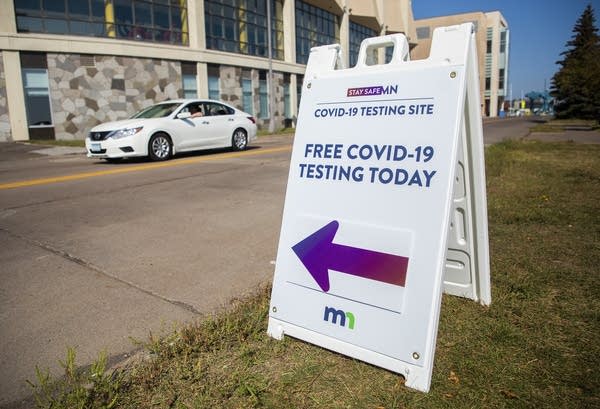
Updated: 2:53 p.m.
Minnesota’s COVID-19 numbers continue to show cases surging at a high level, with nearly 1,000 new cases confirmed on Monday.
It was the fifth consecutive day of newly confirmed cases near or above 1,000. The confirmations, though, came via expanded levels of testing.
The newest numbers come after a weekend when Minnesota reported nearly 2,500 more confirmed COVID-19 cases and 21 more deaths.
The recent elevated numbers of newly confirmed cases have been largely driven by high testing volumes, and key metrics such as hospitalizations and the positivity rate have improved in recent days.
Create a More Connected Minnesota
MPR News is your trusted resource for the news you need. With your support, MPR News brings accessible, courageous journalism and authentic conversation to everyone - free of paywalls and barriers. Your gift makes a difference.
The seven-day trend of active COVID-19 cases in Minnesota remains at a record high in the pandemic.
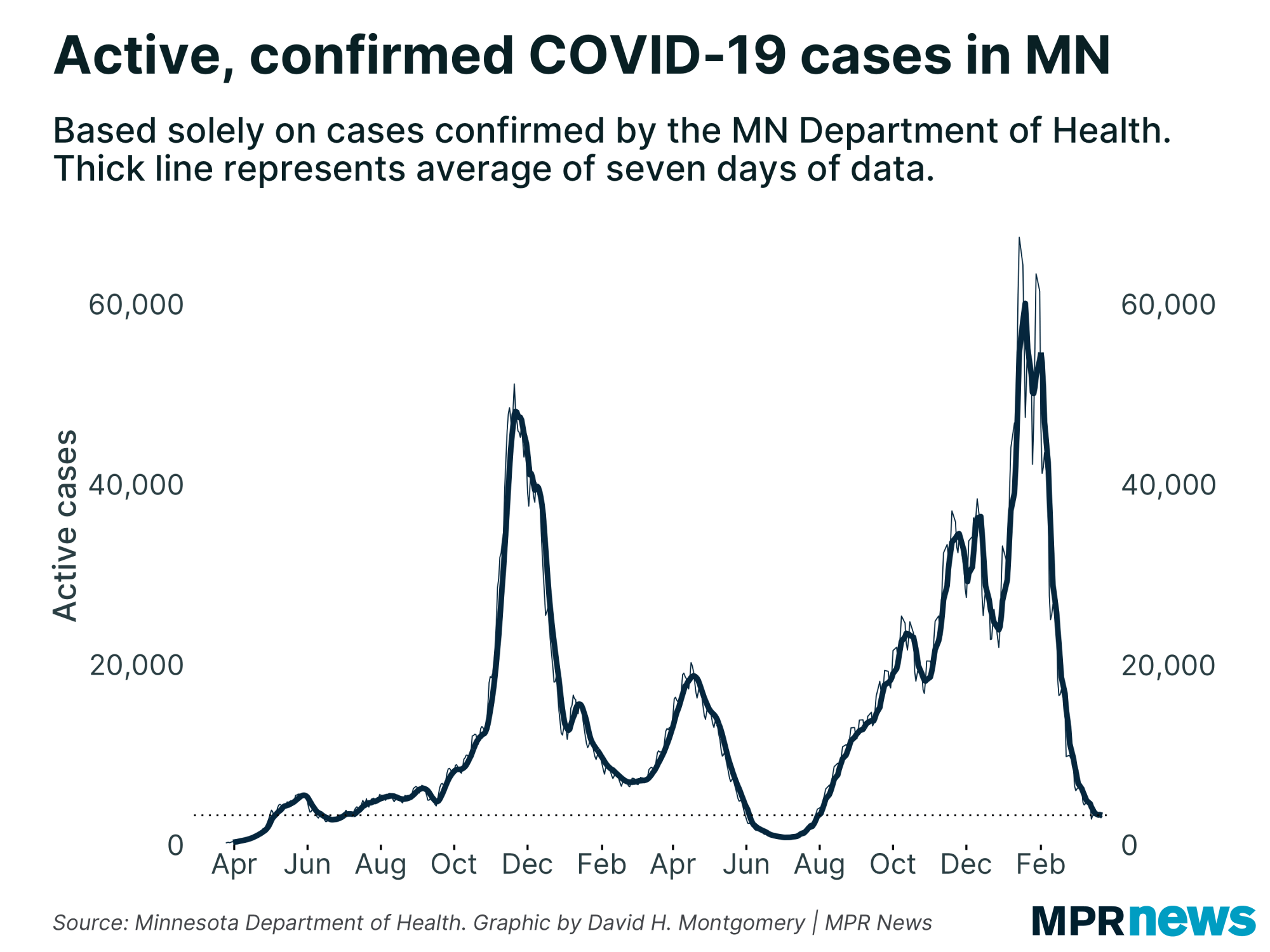
Of the 104,799 cases of the disease confirmed in the pandemic to date, about 90 percent have recovered to the point they no longer need to be isolated.
Three deaths reported Monday raised Minnesota’s toll to 2,083. Among those who’ve died, about 71 percent had been living in long-term care or assisted living facilities; nearly all had underlying health problems.
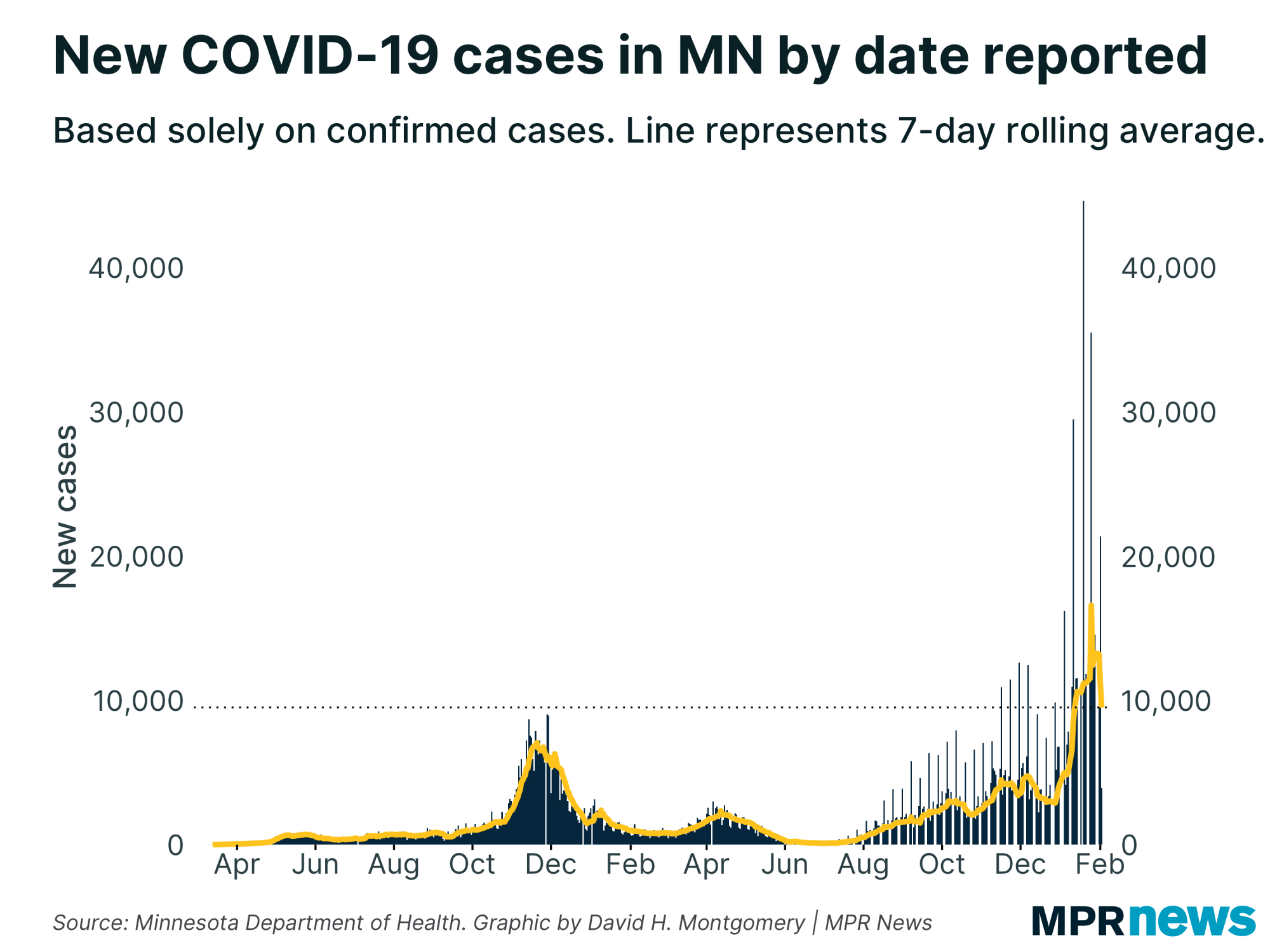
Hospitalization and intensive care admissions are still elevated but are down from last week’s peak. On Monday, Minnesota Health Commissioner Jan Malcolm said there were 367 people current hospitalized with COVID-19. That’s higher than in August when daily counts averaged about 300 patients, and also up from the first half of September.
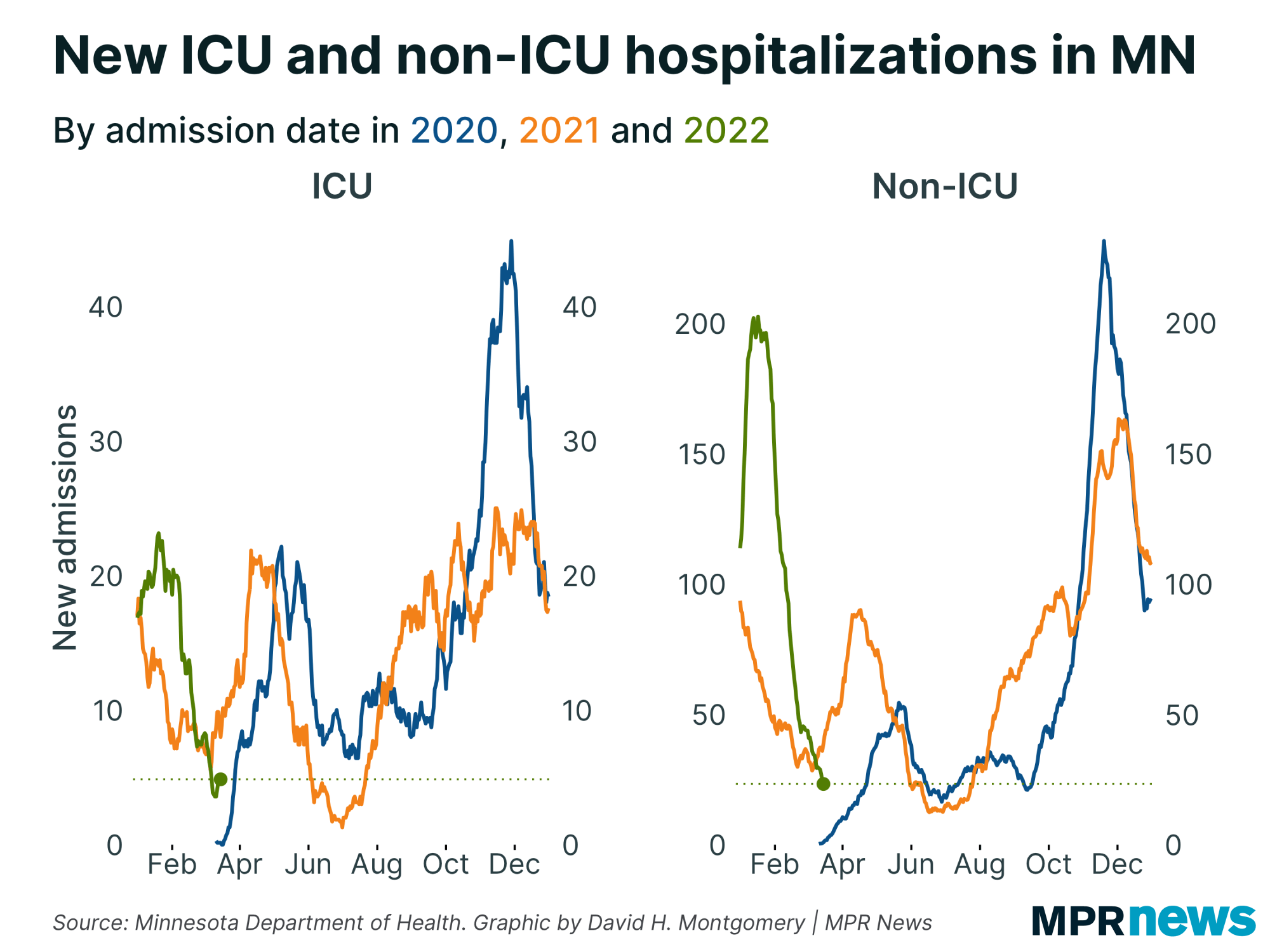
In light of President Donald Trump’s COVID-19 diagnosis, state officials on Friday also warned that people who attended the president’s Minnesota events last week may be infectious without knowing it.
They noted that community spread in St. Louis County, where Trump spoke to a Duluth rally, was high before the president’s visit.
They urged anyone with a connection to the president’s visit to get tested “right away” if they have symptoms and consider it even without symptoms, adding that anyone who was in direct contact with Trump or known COVID-19 cases needs to quarantine.
On Monday, though, Kris Ehresmann, the state’s infectious disease director, said investigators have so far not identified anyone who’s tested positive from being at a Trump event in Minnesota.
She cautioned though that even people who’ve tested negative for the disease should isolate for the 14 day incubation period if they feel they were in close contact with anyone who might have the virus.
“A negative test is not a get out of jail free card,” she said.
Worries continue around college students, kids
People in their 20s make up the age bracket with the state’s largest number of confirmed cases — more than 24,000 since the pandemic began, including more than 14,000 among people ages 20-24.
The numbers help explain why experts remain particularly concerned about young adults as spreaders of the virus.
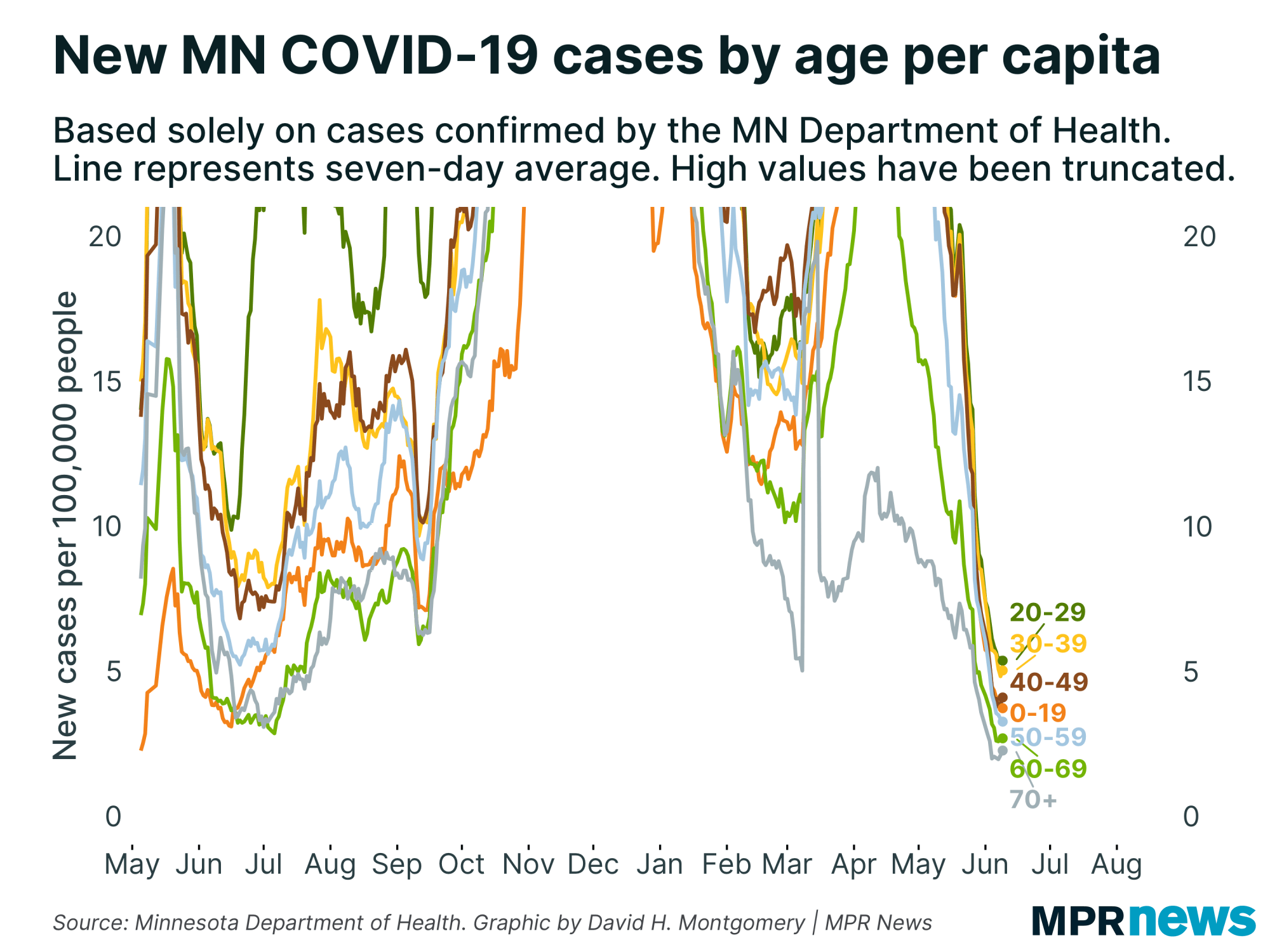
While less likely to feel the worst effects of the disease and end up hospitalized, experts worry youth and young adults will spread it to grandparents and other vulnerable populations and that spread could hamper attempts to reopen campuses completely to in-person teaching.
The number of high school-age children confirmed with the disease has also grown, with nearly 10,000 total cases among children ages 15 to 19 since the pandemic began.
With many schools in Minnesota attempting to teach in-person, officials say they are especially concerned about the rising numbers of teens becoming infected and how that could affect decisions to keep school buildings open.
The Health Department on Friday identified seven school buildings in Minnesota with five or more confirmed cases of COVID-19 in students or staff who were in those buildings while infectious during a two-week reporting period.
The schools are: Brainerd High School, Albert Lea High School, Isanti Middle School; Fairmont Junior/Senior High School, Martin Luther High School and St. Paul Lutheran School in Martin County; and Hinckley Elementary School.
The fact that only seven schools have five or more such cases is “very positive,”Kris Ehresmann, the state’s infectious disease director, told reporters Friday. “We’re not seeing large outbreaks at all associated with a school setting.”
Ehresmann said that the agency had reports of 2,805 COVID-19 cases in the pandemic associated with colleges and universities with nine people needing to be in the hospital and three needing intensive care.
The numbers for colleges or K-12 schools don’t necessarily mean that the disease spread happened in school buildings, only that people were infectious while in a school building, she added.
Surges seen in northern, central Minnesota
Regionally, northern, southern and central Minnesota have driven much of the recent increase in new cases while Hennepin and Ramsey counties show some of the slowest case growth in the state.
Northern Minnesota, once by far the region least affected by the disease, has over the last week averaged the most cases per capita.
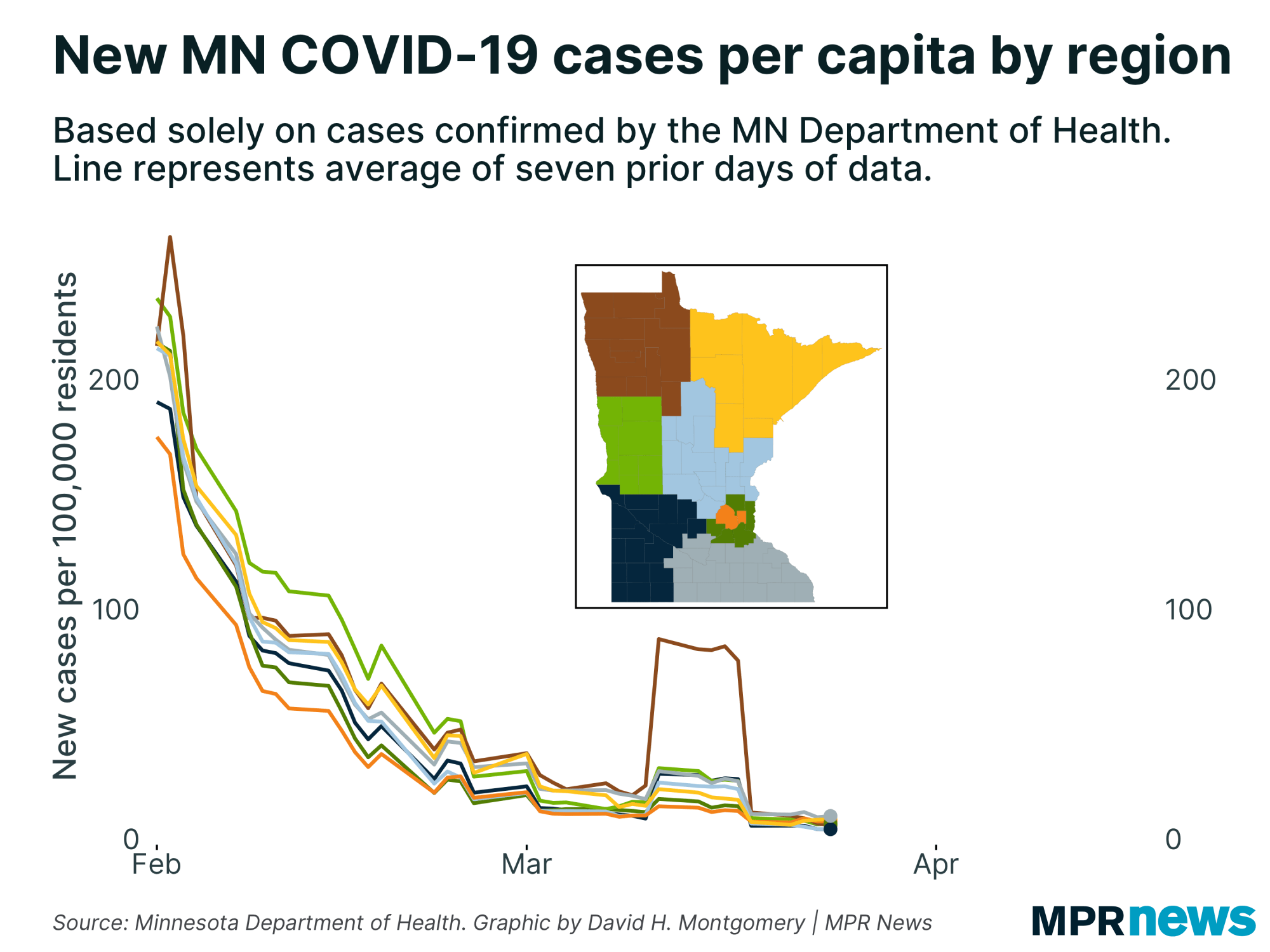
In southwestern Minnesota, at least 75 cases have been traced to a late-August wedding in Lyon County that officials have previously described as the state’s largest single social spreader event.
Thirty-nine cases have now been traced to a Martin County funeral, with one person hospitalized.
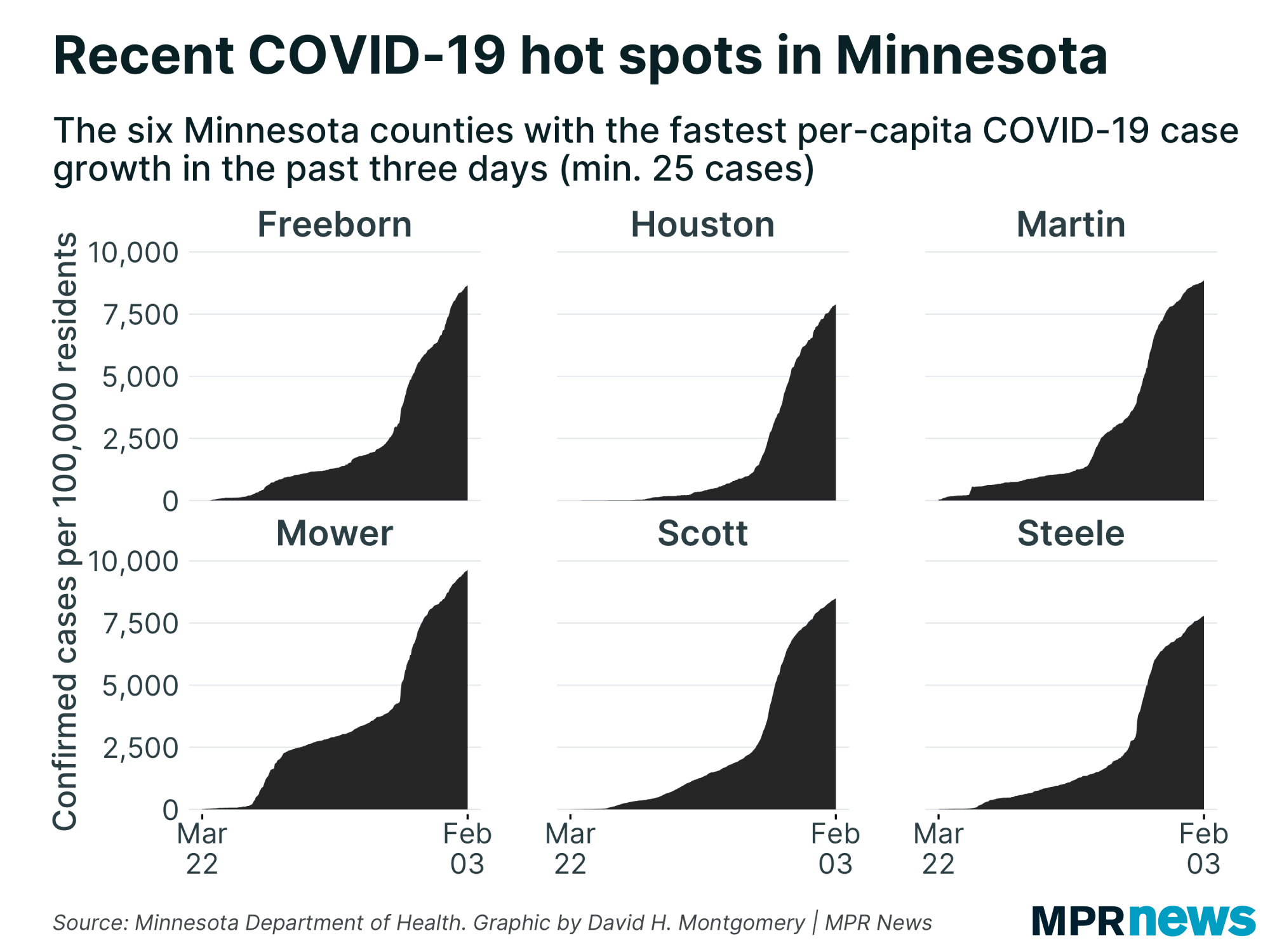
Southeastern Minnesota, specifically Winona, has been another hot spot as students return to college at Winona State and other schools. The problem has been compounded by similar outbreaks nearby across the Mississippi River at the University of Wisconsin-La Crosse.
Developments around the state
No cases so far tied to Trump Minnesota events
Minnesota health officials said Monday they haven’t traced any COVID-19 cases to President Donald Trump’s recent appearances in the state.
No confirmed or probable cases are linked to rallies and a fundraiser that Trump staged in Minnesota over the past couple of weeks, Kris Ehresmann, the state’s infectious disease director, told reporters.
“Our teams are constantly looking for clusters of cases associated with any sort of group setting and our awareness is heightened because of the situation with the president. And we have not yet identified any positive cases at this point,” she added.
Trump announced he had the virus about a day after his trip to Minnesota last Wednesday. Several GOP lawmakers, candidates and supporters sought out tests after the Trump diagnosis. None have reported being positive for the virus.
— Brian Bakst | MPR News
Top Senate Republican tests negative after meeting with Trump in MN
Minnesota Senate Majority Leader Paul Gazelka plans a second COVID-19 test this week after one he took on Friday came back negative.
Gazelka was among the Minnesota Republicans who came in contact with President Donald Trump during his stop in the state last week prior to announcing he had the virus.
The top legislative Republicans says he’ll limit activities and get tested again for coronavirus later this week. He said he received his initial results Monday.
No Republicans who were part of the Trump campaign stop have said they are positive for COVID-19.
Republican U.S. Senate candidate Jason Lewis, who was also at a Minneapolis-St. Paul International Airport greeting event for Trump, said his test result for coronavirus came back negative. He said he would resume campaign events after four days of quarantine.
— Brian Bakst | MPR News
Gustavus professor to study coronavirus impact in immigrant, refugee communities
A Minnesota professor has been awarded a global grant to focus on the impact of COVID-19 in immigrant and refugee communities.
Maddalena Marinari, a professor of history at Gustavus Adolphus College, said the goal is to create a website with a digital collection.
“In the long term, it preserves the experiences of these people. In the short term it could actually help inform legislatures,” Marinari said.
Marinari said she applied for the grant out of frustration after seeing the nation was not focusing on marginalized communities affected by COVID-19.
“Because of the way the United States society is structured these are some of the most vulnerable people to the pandemic. So, a lot of immigrants of color have been disproportionally affected by the virus," she said.
The grant will specifically focus on Latinx, African and Asian communities by sharing their voices through digital collections like news reports and podcasts.
Marinari will be working alongside University of Minnesota professor Erika Lee and two undergraduate students.
The grant, known as the Rapid Response Grant on COVID-19, is one of only 62 awarded across the globe and is provided by the Social Science Research Council.
— Myah Christenson | MPR News
MDH hosting more free testing sites around Minnesota
The Minnesota Department of Health, in partnership with the Minnesota National Guard and local health officials, is offering another round of free COVID-19 testing sites in communities across the state.
"We are doing everything we can to expand access to all Minnesotans for COVID testing," said Dan Huff, assistant commissioner with the state Health Department.
"You don't need an ID," Huff said. "What you do need is a phone number or an email so we can get in touch with you with the results. If you are having any symptoms, definitely go get tested. If you have been identified as a contact of someone who is infected, go get tested. Or if you're anxious — go and get tested."
This week's test sites include:
Cloquet, Fond du Lac Tribal and Community College Gym — Tuesday, Wednesday and Thursday from noon to 6 p.m.
Ely, St. Louis County Garage — Tuesday from noon to 6 p.m.
Fairmont, Armory — Tuesday, Wednesday and Thursday from noon to 6 p.m.
Inver Grove Heights, Armory — Tuesday, Wednesday and Thursday from noon to 7 p.m.
Minneapolis, New Salem Baptist Church — Thursday and Friday from 2-6 p.m.
Northfield, Emmaus Church — Tuesday, Wednesday and Thursday from noon to 6 p.m.
St. Joseph, Clemens Field House at College of Saint Benedict — Tuesday, Wednesday and Thursday from noon to 6 p.m.
Willmar, Armory — Tuesday, Wednesday and Thursday from noon to 6 p.m.
State health officials are encouraging people to sign up for an appointment in advance, to avoid long lines. Find more information here.
— MPR News staff
Virus spread shifts the school guidance map
The evolving COVID-19 pandemic in Minnesota continues to change school reopening recommendations around the state.
The most recent batch of recommendations, released Sept. 17, cover cases from Aug. 23 to Sept. 5 — a period that happened to see a late-August spike in new COVID-19 cases.
The result? A full 25 counties saw their COVID-19 case counts slip past one of the Health Department’s thresholds, changing their recommendation toward more distance learning for more students.
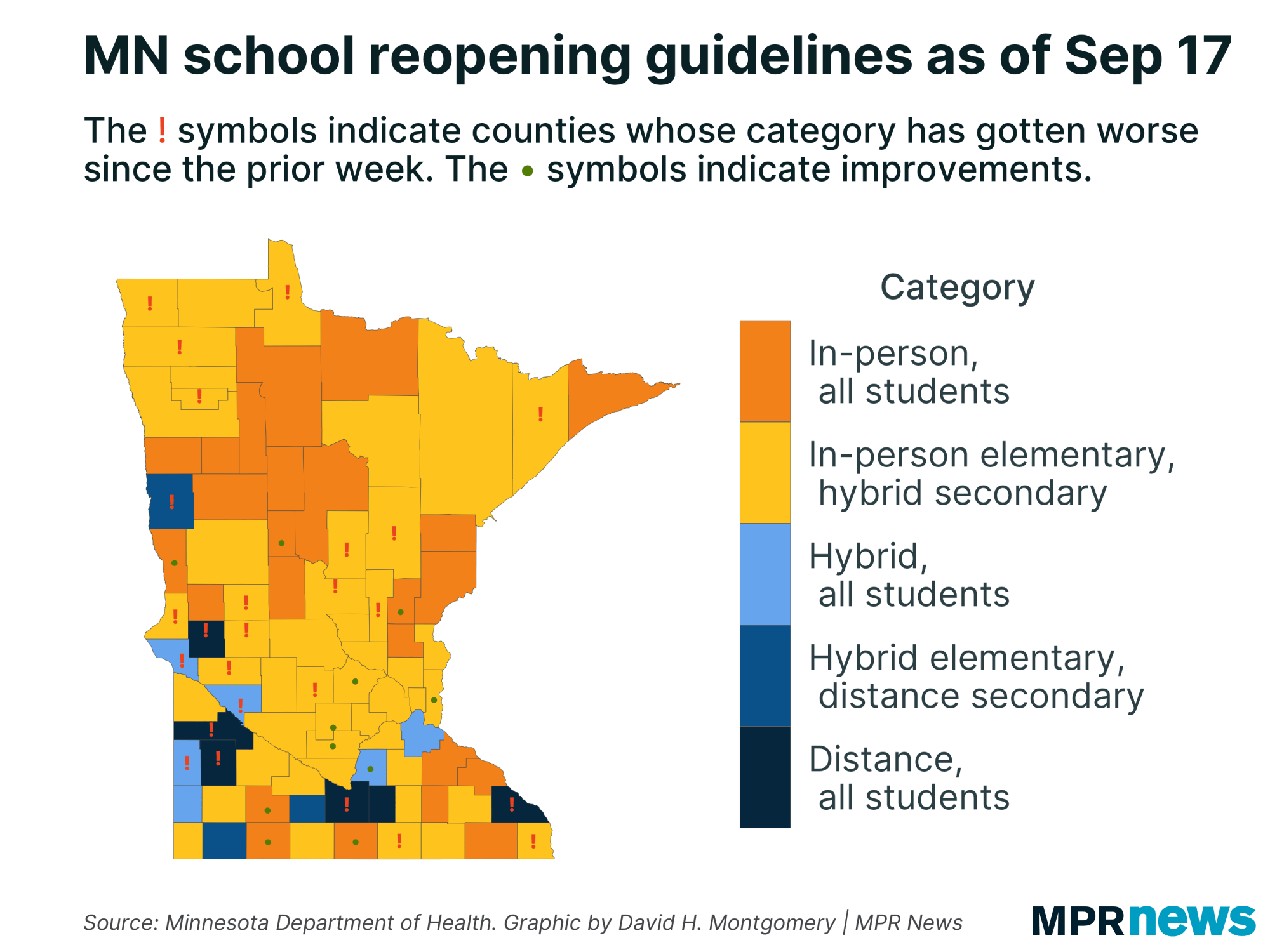
In the most recent update, six counties are recommended to have all students do full-time distance learning: Blue Earth, Lyon, Stevens, Waseca, Winona and Yellow Medicine counties. All but Waseca County were previously recommended to allow at least some in-person learning.
Not every county got worse. Eleven counties saw their case rates improve compared to last week’s results, and saw their recommendation shift to more in-person learning.
Overall, 24 largely rural counties have a recommendation of in-person for all students.
A formula produced by the Health Department generates the guidance for districts to help decide whether to have in-person learning, distance learning, or a mix, based on the rate of COVID-19 cases in that district’s county over a two-week period.
These recommendations are only considered the starting point for school districts, which make their own learning plans in cooperation with the Health Department.

Minnesota’s yo-yoing COVID-19 case numbers in recent weeks have meant some drastic swings in school districts’ safe learning recommendations, but state health officials say they’re taking the data irregularities into account when working with schools to set learning plans.
Because Minnesota’s calculation uses weeks-old data and calculates cases by the day a person got tested rather than the day the tests were reported, this update is not affected by recent reporting delays caused by the Labor Day weekend.
— David H. Montgomery | MPR News
Top headlines
Worried you might have been exposed to COVID-19? Here’s what to do: If you attended any of the Trump campaign’s Minnesota events, you might be wondering whether it’s time to quarantine or get tested.
Leader in Minnesota's Karen community dies from COVID-19 complications: Marner Saw died Friday from complications of COVID-19, after several weeks in the hospital. He was 50.
COVID-19 in Minnesota
Data in these graphs are based on the Minnesota Department of Health's cumulative totals released at 11 a.m. daily. You can find more detailed statistics on COVID-19 at the Health Department website.